6 Recycling Tips to Start Your Summer Garden
April 26, 2021
Spring is in the air and it’s time to gather up the kids for some garden work – a place where little hands can help make some of the biggest (and most beautiful) changes!
Gardening is such a beautiful testament to sustainability – with just a few items (seeds, soil, sun, water) and some love and care – you can grow just about anything. And – you can build this beautiful garden with nearly all recycled items that you likely have at home right now.
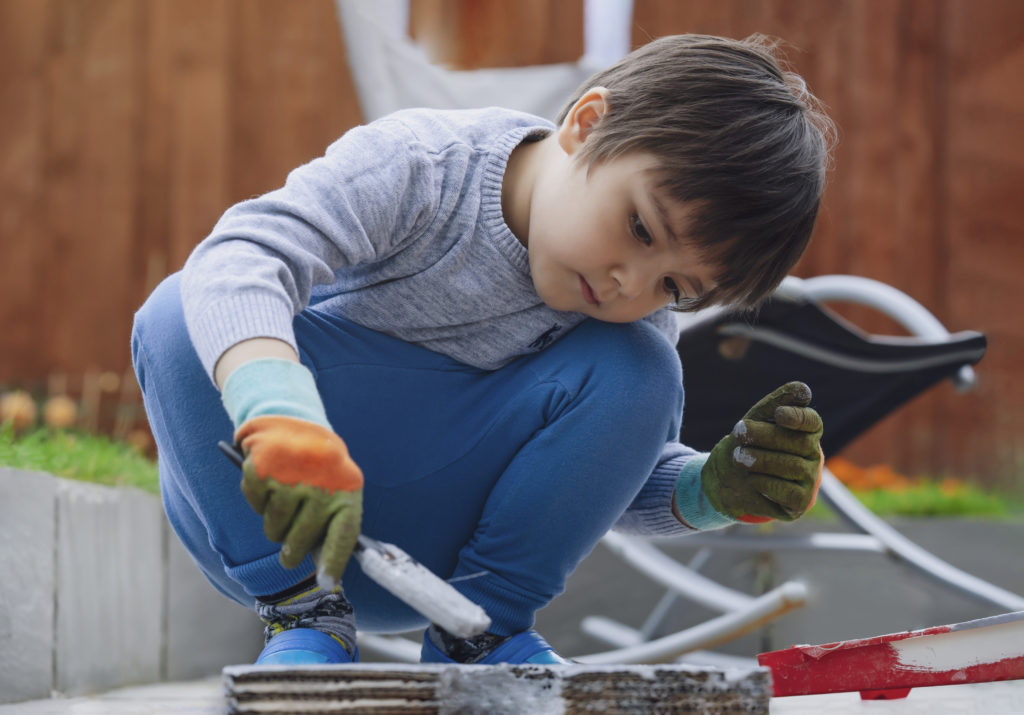
In this guide, we’ll give you our very best tips to start your own garden (from seedlings to stunning art) that your entire family will love to be part of!
Let’s roll up our sleeves and get started!
- Discover the amazing second life of cardboard
If you’re like us, you’ve done a lot of online shopping this past year. Great news – these cardboard boxes can be recycled and transformed into your gardening best friend! As a form of paper, carboard break downs and releases carbon into the soil (while grass and weeds add nitrogen) – helping nourish it.
To make sure you have the right carboard for your garden, look for pretty “clean” and basic boxes – avoiding heavy print, shiny finish, stickers, and tape (although most Amazon Prime boxes come with compostable tape which is pretty cool).
Now that you’ve got your pile of cardboard, check out these three amazing ways to use it!
Sheet mulching (aka “composting in place”): If you’re starting a garden from scratch, cardboard can save you a ton of intense work. Typically, you’ll need to do extensive weeding, along with tilling and tending to the soil before planting. Cardboard simplifies this process since it’s a no-dig permaculture technique that mimics the soil building process that occurs naturally along the forest floor – improving soil quality while slowly decomposing.
Sheet mulching is super easy to do: Trim the grass short, give the plot a watering, lay single sheets of cardboard over the entire garden plot, spread a 4-inch layer of nutrient-rich compost over the cardboard layer, add a final layer (wood chips, leaf mold, or other mulching material) to a depth of 2 to 3 inches, and water everything thoroughly.
Weed blocking: Cardboard is the perfect all-purpose weed barrier (and a great alternative to pulling them or using herbicides) since it covers weeds and prevents them from receiving sunlight. Place a layer of cardboard down wherever weeds are a problem, and make sure to cut holes or notches for plant stalks and trunks. If you do this about 3 inches wider in circumference than the girth of the stem, you’ll ensure oxygen and water can still reach the plants’ roots. After the cardboard is down, water it and cover it with a 3-inch layer of mulch. Keep in mind you’ll likely need to replace the cardboard after a season or two.
Composting: Two things are key for decomposition: carbon and nitrogen. Since cardboard is the perfect carbon source, just shred it, tear it, and toss it in. You’ll have some very happy compost!
2. Make seedling starters from recycled objects
Skip the store run for pots and trays – you already have everything you need for some cool (and recyclable) seedling starters! Here are some starter homes to give your seeds a great jump-start to life (free from pests) as they grow:
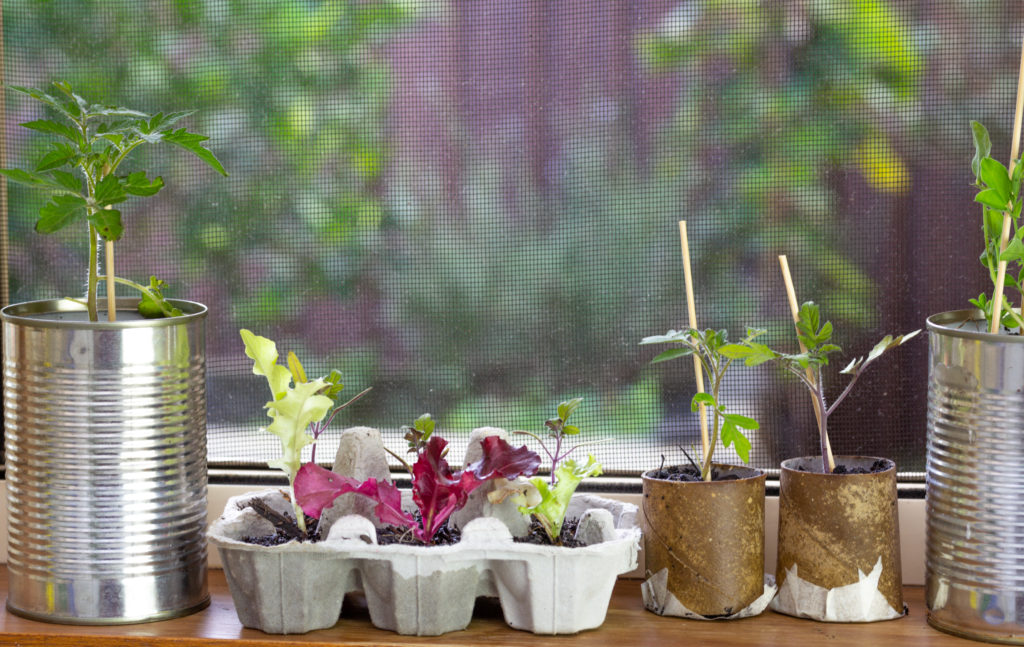
Toilet paper rolls: These are perfect for plants that don’t like their roots disturbed (beans, peas, and sweet peas) since you can plop these right into the soil without removing the plant. Peel back the top of the roll before you plant them (especially if they aren’t filled all the way) and know that break down/molding is a natural process with these planters over time.
Eggshells: So simple – first wash the shells (you can even put them into a 130°F oven for 20 minutes to kill any germs if you’d like), fill them with compost, add 1-3 seeds, and lightly water. You can put these planters directly into the garden when they’re ready!
Egg Cartons: Now that you’ve used up all the eggs, even the carton has a second life! Fill up these little cups with soil and seeds and plant it in the garden.
3. Build a mini greenhouse
Cloches are mini greenhouses that protect your plant – keeping it warm and safe from snails and slugs. Depending on the size you need – check out the small and large versions above – you can probably use the water bottles/jugs you already own! Use clear containers (darker ones can block light) and make sure there’s proper ventilation by poking holes or leaving the top uncapped.
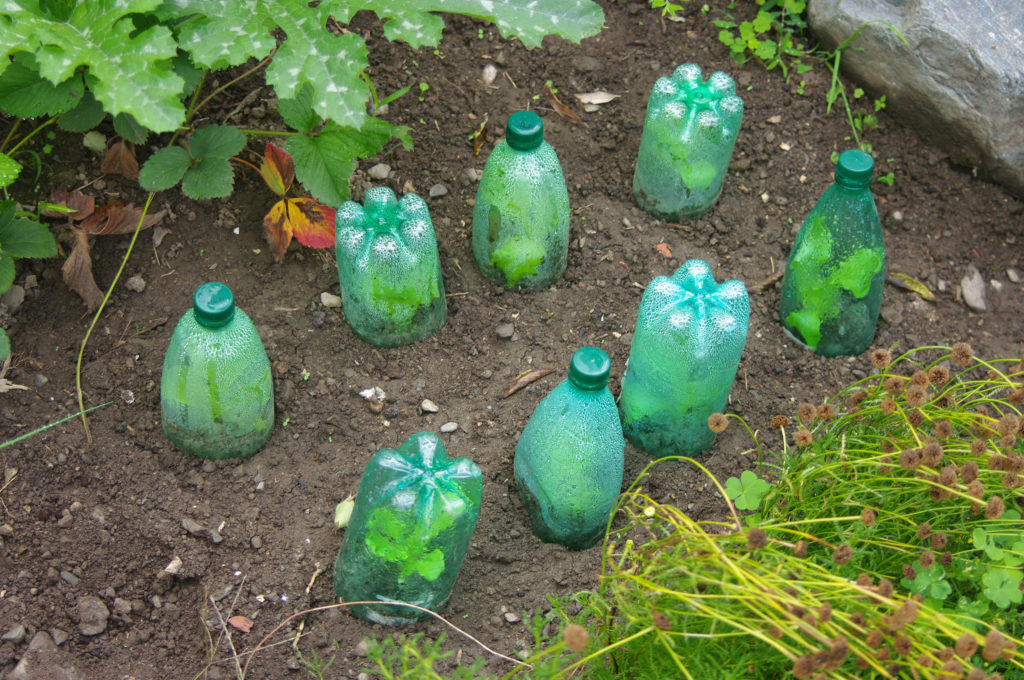
4. Get creative and embrace the unexpected
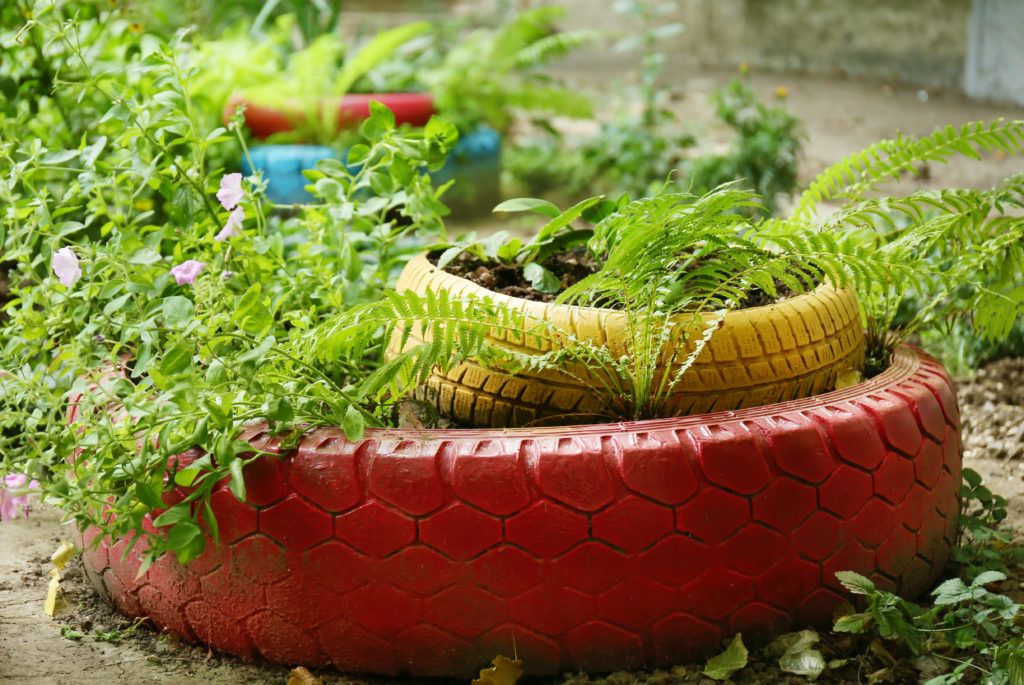
Now this is where your imagination can go wild! Old sinks, bathtubs, a gas cooker, or even a rowboat can be a very cool upcycled garden planter and statement piece in your garden! Is there anything you’re planning to send to the dump that instead could have a second purpose in your new garden?
For most “repurposed” planters, you’ll want to fill the bottom with gravel and simply top it up with soil before you plant.
5. Create beautiful (and priceless) garden art
This is where we really need our young artists since kids have the best imaginations when it comes to transforming your garden into something magical! Here’s some of our favorite ideas, but we’d love to hear what your kids come up with, too!
Paint can birdhouses
All you need are some old cans, leftover paint, some ribbon or a string, and a small glued-on peg/twig for the birds. Your kids can fill these with seeds and also keep an eye out for when it’s time to refill!
Rubber boots
This is pretty sentimental to find new life for your kids’ favorite old boots. Make sure to use rubber boots that have a large opening so you can fill it with plenty of soil for your plants. This one is so fun – and the more colorful, the better!
Plant markers
There are countless ways to do these – so let your young artists shine! Here are a few ideas to jumpstart the inspiration:
- Popsicle sticks
- Recycled mason jar lids
- Clothespin garden markers
- Spoon markers
- Rock marker
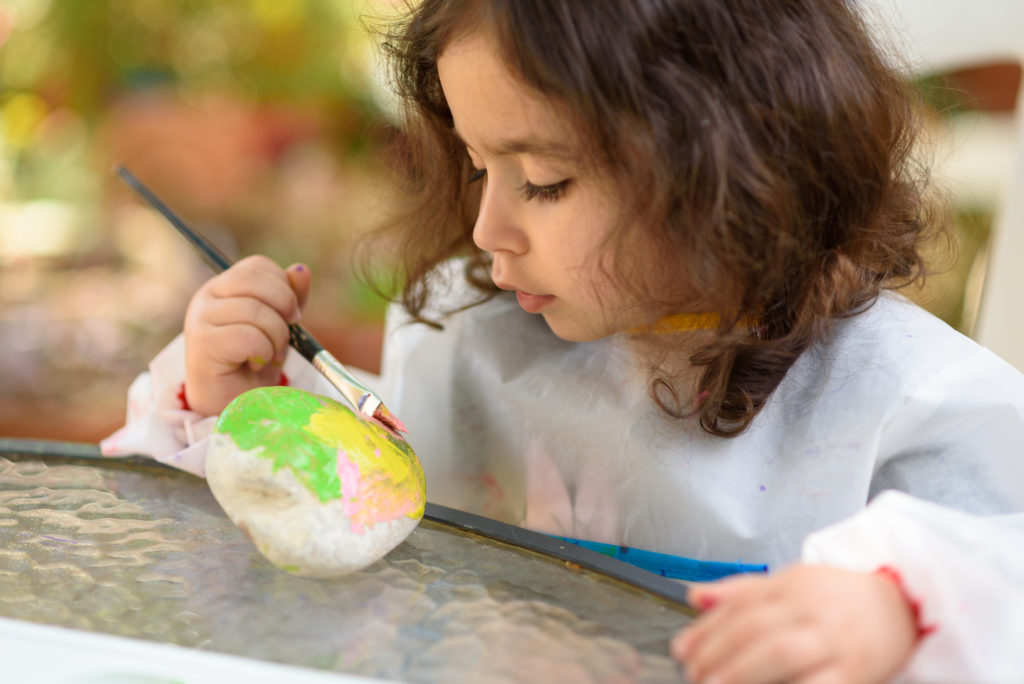
6. Make it engaging for the whole family!
Your recycled summer garden can be so much more than just a garden. It can be a true experience for your whole family.
Here are some ideas to make this project memorable for everyone:
Make learning FUN: It’s cool to be a newbie at something because there’s so much excitement in learning! Game plan with the family – what books do you need and what videos should you check out? Are there some local gardening shops/pros you could talk to for getting your green thumb ready? This is a fun new adventure to take on!
Make a garden wish list: What does everyone want to plant? Is there a favorite veggie or flower you’d all love to see bloom? For your older kiddos, ask them to check out how these plants can best thrive in the Maine climate.
Plan out a recycled material scavenger hunt: Share this article with your kids and have them find as many of the materials as possible around the house! It’s fun to look at what else they come up with that could be re-used and recycled.
Give special jobs to the kids: The whole family can help with the garden. Whether it’s watering, weeding, or just checking on things – let kids know how important their help is. You might even consider creating a chart to help everyone remember their gardening chores!
Journal it up: Take pictures and have the kids keep notes on what worked the best (or what needs some tweaking) – so then you’ll be ready for next year – and many more to come.
Share and spread joy: Whether it’s sharing veggies with loved ones or dropping off a surprise flower on a neighbor’s doorstep – encourage your kids to find ways to brighten up the world with their brand new garden!
The MyAlfondGrant website (myalfondgrant.org) is sponsored by the Alfond Scholarship Foundation (ASF), a Maine non-profit organization. This site is intended as a service to families of children who have been awarded the $500 Alfond Grant for college, so that they can access information on college and career planning, and, in connection with the MyAlfondGrant Info from FAME website (www.myalfondgrantinfofromfame.com), sponsored by the Finance Authority of Maine (FAME), they can track the value of their child’s Alfond Grant. The information made available on myalfondgrant

 BACK
BACK